Let us paint you a picture that might feel a little too familiar. You've just launched an amazing new feature. Your product team is thrilled. You’ve created beautiful sales collateral. But six months later? Your sales team is still pitching the product the same old way, and that shiny new feature might as well not exist.
At Aircall, we've been in the trenches figuring out how to solve this very problem. Today, we’ll share what we’ve learned about aligning product marketing and sales enablement to drive revenue impact when launching new products.
Why is sales enablement so challenging?
Here's the thing about enablement that nobody really talks about: it's not just about creating great content or running training sessions. It's about competing for the most precious resource your sales team has – their attention.
Think about it. If you're in B2B SaaS like we are at Aircall (where we serve 20,000+ customers across 100+ countries), your sales reps are juggling constant demands. Finance wants them to update forecasts, IT needs them to adopt new tools, partners want to talk strategy – and that's before we even talk about their actual job of selling.
On top of that, sales reps are juggling dozens of different SaaS applications. Knowing where to deliver enablement content so it fits seamlessly into their workflow is a huge challenge.
But here's what really stings: trust is everything. Even the best account executives can be (and I say this with love) real divas. They're not going to listen to someone who hasn't been in their shoes, carried a quota, or proven they understand the reality of their day-to-day challenges.
These were just some of the enablement problems we were facing a couple of years ago at Aircall.
For expert advice like this straight to your inbox every Friday, sign up for Pro+ membership.
You'll also get access to 30+ certifications, a complimentary Summit ticket, and 130+ tried-and-true product marketing templates.
So, what are you waiting for?
The product marketing side of the story
The challenges on the product marketing side were equally complex.
First up: inconsistent messaging. We'd spend weeks crafting the perfect positioning for a new feature, only to hear five different versions of it on sales calls. It was like playing a game of telephone, except the stakes were our revenue targets.
Even worse? The content graveyard. You know what I'm talking about – those beautifully designed one-pagers, battlecards, and pitch decks that take hours to create but never see the light of day.
Two years ago, we discovered that only 48% of the content created by our product marketing team was even being viewed by our go-to-market (GTM) teams. Less than half! Seeing that number was a real wake-up call.
We were also facing some pretty painful positioning problems. Aircall has a complex segmentation strategy, and we found our teams weren't adapting their pitch based on who they were talking to. A small business has very different needs than an enterprise client, but in the field, our messaging wasn't reflecting that nuance.
And here's the kicker – we had no real way to measure product marketing’s impact on revenue. We were creating tons of enablement assets and running all kinds of initiatives, but we couldn't draw a clear line to business outcomes.
Bridging the gap between product marketing and sales enablement
By early 2023, we knew we had to fix our enablement problems. Our product roadmap was becoming increasingly ambitious – we're talking about 20 releases per month in 2024. For a company our size, that's a massive amount of change to manage.
On top of that, we launched three new add-on products – entirely new products our teams needed to learn how to position, sell, and support.
The old way of doing things simply wasn't going to cut it anymore.
So what did we do? How did we bridge the gap between product marketing and enablement to create real impact?
The solution wasn't just about creating better content or running more training sessions. It was about fundamentally rethinking how these two critical functions work together. It meant building trust with our sales teams, meeting them where they already work, and creating systems that stick.
Our four-pillar framework for alignment
When we set out to drive alignment between sales and product marketing, we didn't just throw tools at the problem. Instead, we built our strategy on four essential pillars:
⚙️ Process: Led by product marketing
🛠️ Tools: Driven by our enablement team
📈 Data-driven collaboration: A joint effort
🤝 GTM leadership buy-in: The key to making our launches a success
This framework became our blueprint for success, guiding every product launch and enablement initiative.
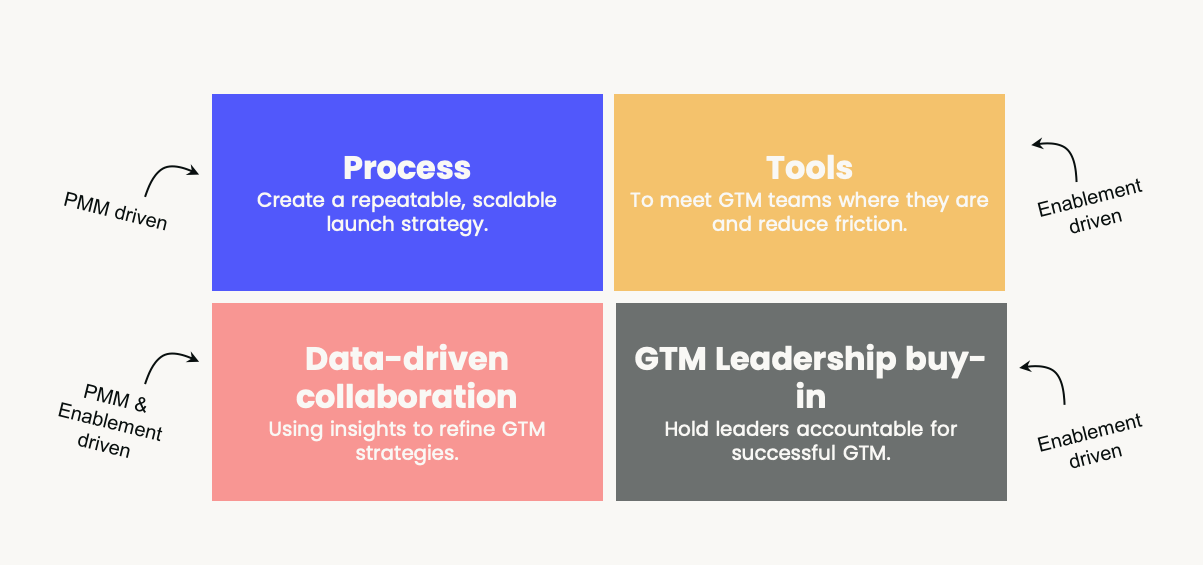
Pillar #1: Process
The first thing we did was tie our enablement process directly to our product launch tiers. This tiered approach allows us to standardize our efforts, ensuring every launch receives the appropriate level of support. Here's how we approach it at Aircall:
- Tier 1: The heavy hitters. These are sellable add-ons aimed at driving new revenue, whether from existing markets or new ones. They get the full enablement treatment.
- Tier 2: Big features that matter, but maybe aren't as differentiating or monetizable as Tier 1s.
- Tier 3: Important improvements that enhance our product.
- Tier 4: Backend stuff that PMMs don't really work on.
We organize our launches by tiers twice a year – at the beginning of the year and mid-year, when the product team updates the roadmap. We validate them with the product team and then immediately loop in the enablement team. This allows both the product marketing and enablement teams to plan work ahead of time.
Key enablement activities and artifacts
For each tier, we've defined standard enablement activities and artifacts:
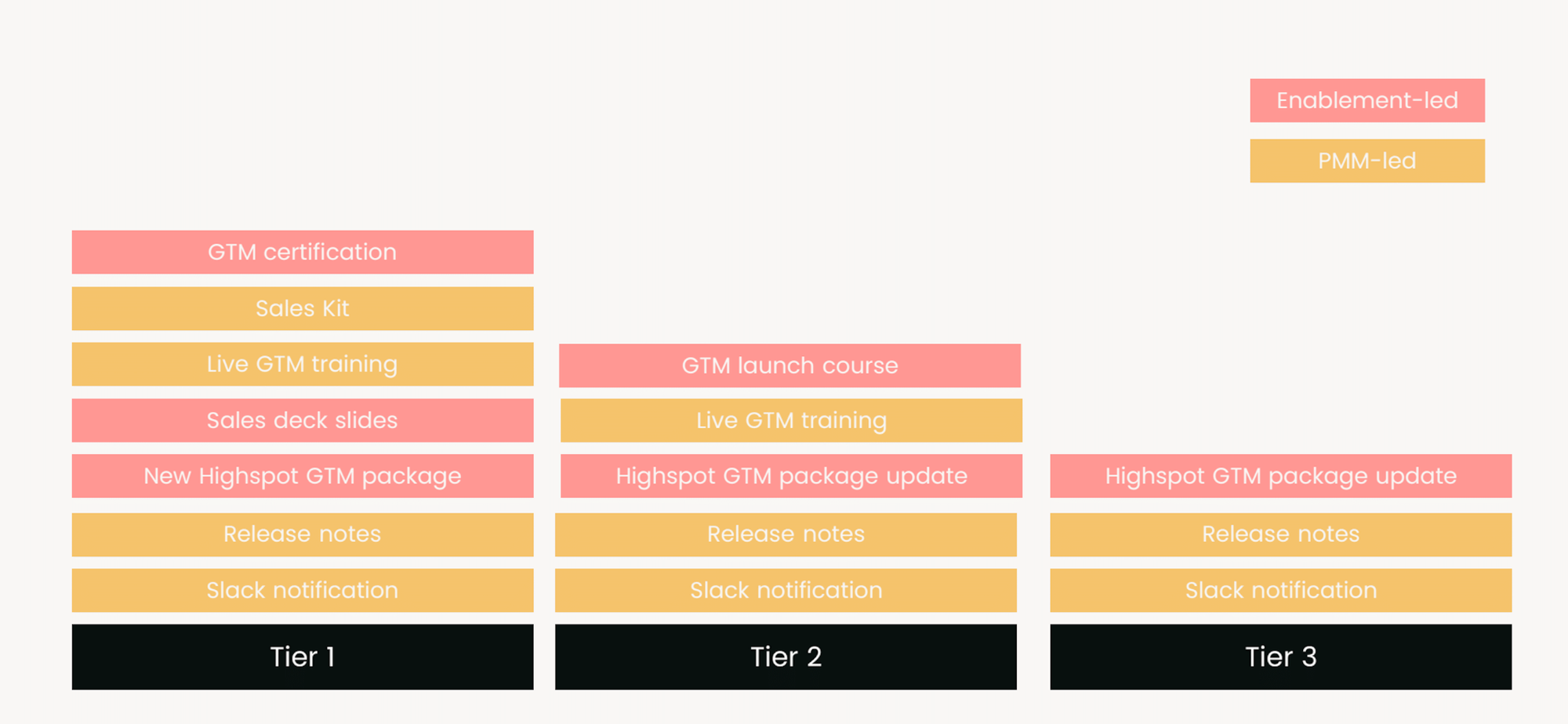
We don't always follow this template 100%, but it gives us predictability. More importantly, it gives our go-to-market teams predictability. They know exactly what to expect when a launch is coming.











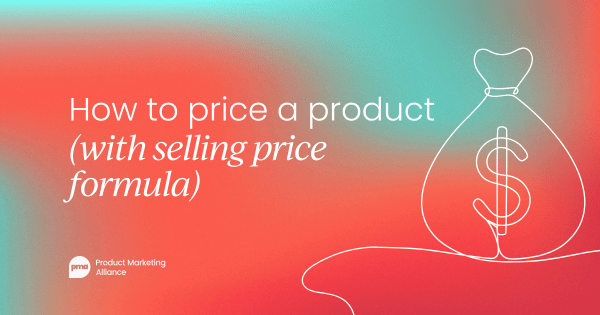


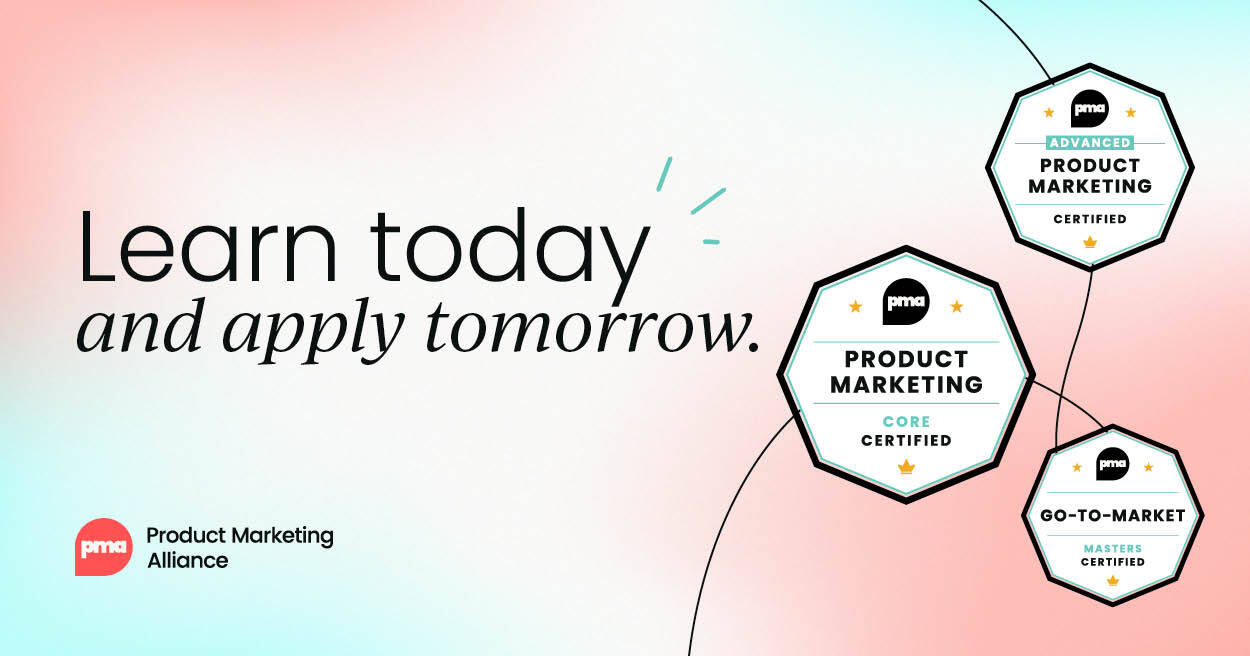
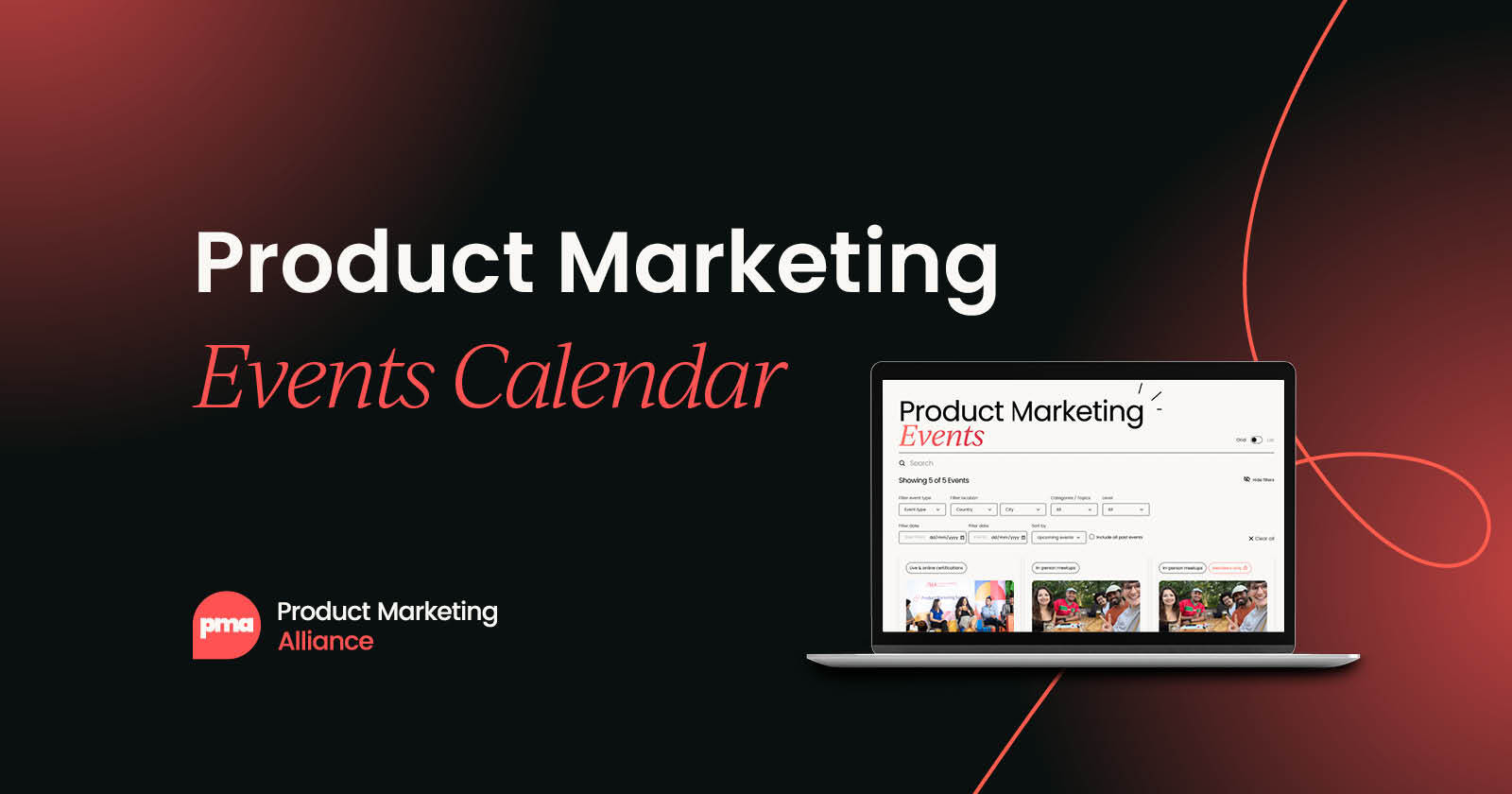


 Follow us on LinkedIn
Follow us on LinkedIn




.svg)